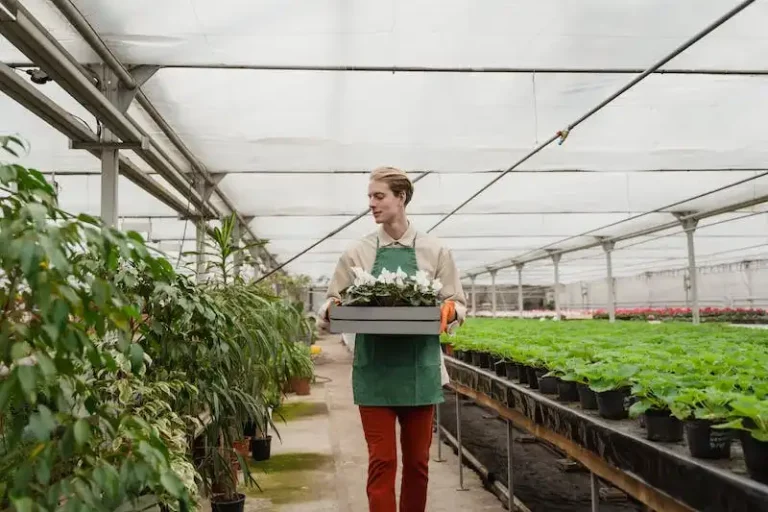If you love the growth and shape of your fiddle leaf fig tree but find it getting too large for your space, it may be time to prune. Pruning your fiddle leaf fig tree is essential to keep it healthy and in a manageable size. By regularly pruning your tree, you ensure that it continues to grow in a way that not only fits your space, but also enhances its overall appearance.
One of the major reasons to prune your fiddle leaf fig tree is to encourage branching. Fiddle leaf figs naturally grow with one long stem, but by pruning, you can encourage the growth of multiple trunks and create a bushier tree-like shape. Additionally, by pruning the apical tip, or the topmost leaf bud on your tree, you can stimulate the growth of new branches lower down on the stem.
When it comes to pruning your fiddle leaf fig tree, timing matters. The best time to prune is in the spring when the tree is actively growing. Pruning in the spring allows the tree to recover more quickly, as it has plenty of time to heal and grow before the slower growth period of winter.
Before you start pruning, it’s important to have the right tools. A sharp, clean blade is essential for making accurate cuts and preventing damage to the tree. Always disinfect your blade before making any cuts to prevent the spread of disease. Additionally, having a planter or pot ready to transplant the cuttings can help you propagate new fiddle leaf fig plants from the pruned branches.
Cutting back Fiddle Leaf Figs
When it comes to pruning your fiddle leaf fig tree, cutting back is a technique that can help promote growth and create a fuller, bushier plant. Though fiddle leaf figs can grow quite tall and large, they can also benefit from regular pruning to maintain a more manageable size and shape.
If you’ve had your fiddle leaf fig for a year or longer, you’ve probably noticed that it has grown quite a bit since you first planted it. While some people love the wild, tree-like shape of their fiddle leaf figs, others may prefer a more compact and fuller look.
One reason to consider cutting back your fiddle leaf fig is if it has become too tall or is outgrowing its space in your home. By cutting back the branches, you can create a more compact plant that fits better in your space. Additionally, pruning can help encourage branching and make your fiddle leaf fig look bushier and more attractive.
There are multiple methods for cutting back your fiddle leaf fig. One common method is called notching, which involves making small cuts or notches in the base of the trunk to promote new growth. Another method is simply cutting back the branches to your desired height. Both of these methods can be effective in shaping your fiddle leaf fig and promoting new growth.
When cutting back your fiddle leaf fig, it’s important to make clean cuts with sharp pruning shears. It’s also important to cut just above a leaf or branch node, as this will encourage new growth. Be sure to remove any dead or diseased branches as well, as they can hinder the overall health of your plant.
After cutting back your fiddle leaf fig, make sure to provide it with proper care, including adequate light, water, and soil conditions. Fiddle leaf figs love bright, indirect light and well-draining soil. Be cautious not to overwater your plant, as this can lead to root rot.
By cutting back your fiddle leaf fig and keeping it well-maintained, you can ensure that it always looks its best. Pruning can help promote healthy growth, maintain the desired shape, and keep your fiddle leaf fig thriving for years to come.
So if you’re looking to give your fiddle leaf fig a deep trim or simply want to shape it into a more manageable size, cutting back is the ultimate guide to achieving the desired look. With proper care and pruning techniques, you can expect to see significant benefits, including a fuller plant and a more comfortable fit in your home.
Remember, when it comes to pruning your fiddle leaf fig, patience is key. It may take some time for new shoots to emerge and for the plant to fill out, but with the right techniques and care, you’ll be rewarded with a beautiful and healthy fiddle leaf fig tree.
Cutting Fiddle Leaf Figs
Pruning is an important step in the care and maintenance of fiddle leaf figs. When you cut the branches of a fiddle leaf fig tree, it stimulates the production of auxins, a plant hormone that promotes overall growth. By pruning, you can keep your fiddle leaf fig tree in the right shape and promote a healthy and green appearance.
Before you start cutting, make sure you have the right tools. Clean and sharp pruning shears are essential for a clean cut that promotes faster healing. You may also need a trellis or other support if you want your fiddle leaf fig to grow in a certain shape or direction.
When it comes to the actual cutting, there are a few tips to keep in mind. First, decide whether you want to make a small cut or a more dramatic one. If you want to shape your fiddle leaf fig into a smaller, tree-like structure, you can make smaller cuts along the branches. However, if you want to encourage more growth and a bushier appearance, you can cut back the branches more dramatically.
Another important consideration is the location of the cut. If you cut just above a leaf, your fiddle leaf fig will focus its growth on that leaf and create a more bushy appearance. On the other hand, if you cut above a node, it will encourage the growth of a new branch or multiple branches. The location of the cut will depend on the overall shape you want to achieve.
After cutting, it’s important to keep your fiddle leaf fig healthy and thriving. Water the plant as needed, ensuring the soil stays moist but not soggy. Fertilizing is also helpful, as it provides the necessary nutrients for the plant to grow. Combining both proper watering and fertilizing will ensure that your fiddle leaf fig grows well and remains in good condition.
If you’ve purchased a fiddle leaf fig that already has multiple branches, you may want to consider whether pruning is necessary. In some cases, allowing the dominant apical branch to grow might be better, while in others, pruning can help balance the growth and shape of the plant. It ultimately depends on your personal preference and the specific needs of your fiddle leaf fig.
Overall, cutting fiddle leaf figs can be a rewarding process that allows you to shape and maintain the growth of your plant. Whether you’re aiming for a tree-like structure or a vine that climbs trellises, pruning can help achieve the desired shape and promote healthy growth. Just remember to use the proper tools, make clean cuts, and provide the necessary care to keep your fiddle leaf fig thriving.
Tools for cutting your Fiddle Leaf Fig
When it comes to pruning your Fiddle Leaf Fig tree, having the right tools can make a big difference. Here are some tools that you might find helpful:
| Tool | Description |
|---|---|
| Pruning shears | These handheld scissors-like tools are perfect for trimming small branches and leaves. |
| Pruning saw | If your Fiddle Leaf Fig has gotten quite large and the branches are thicker, a pruning saw will be necessary. |
| Ladder | If your Fiddle Leaf Fig has grown tall and you need to prune the branches higher up, a ladder will be useful to reach those areas. |
| Trellis | If your Fiddle Leaf Fig is climbing and you’d like to guide its growth, a trellis can be placed above or beside the plant to support it. |
| Gloves | Protect your hands from any thorns or sharp edges while pruning. |
Remember to sterilize your tools before and after each use to avoid spreading any potential infections. You can use rubbing alcohol or a bleach solution to clean your pruning tools.
Having the right tools on hand will make the pruning process much easier and efficient, helping your Fiddle Leaf Fig thrive and maintain a healthy appearance.
Where to cut Fiddle Leaf Fig plants
When it comes to pruning your Fiddle Leaf Fig plants, knowing where to cut is essential. The right cut can help your plant grow healthier and stronger, while the wrong cut can cause damage or hinder its growth.
There are a few key areas on the plant where you can make strategic cuts for optimal growth. Let’s explore these areas:
| Area | Reasons to Cut |
|---|---|
| Apical meristem or the terminal bud | This is the topmost growing point of the plant. By cutting this bud, you encourage the growth of side shoots, giving the plant a fuller appearance. |
| Around 1/3 above a leaf node | By making a cut above a leaf node, you promote new growth from that node, creating a bushier plant. |
| Overgrown branches | If a branch has become too long or is growing out of balance, you can prune it back to maintain the plant’s shape and balance. |
| Sections located too close to each other | If your plant has branches that are too densely packed, cutting some of these sections can allow more light and air to reach the inner parts of the plant, promoting healthier growth. |
| Above a notch or a trellis | If you’ve trained your Fiddle Leaf Fig to grow on a trellis or have notched it to encourage upright growth, cutting above these points will help maintain the desired shape and promote upward growth. |
Remember, when making a cut, it’s important to use sharp and clean pruners to minimize any damage to the plant. Additionally, always wait until your plant is in its active growing season, typically during spring or summer, before pruning.
Pruning your Fiddle Leaf Fig plants can be an essential part of their care routine. By knowing where to make strategic cuts, you can help your plant grow healthier, maintain its shape, and encourage new growth.

